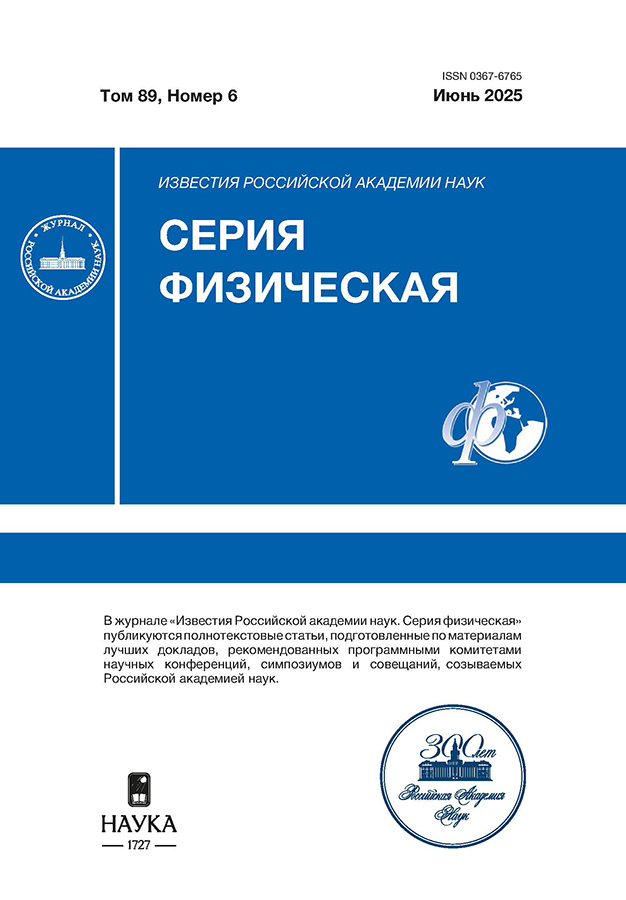Experimental study of galactic cosmic ray fluxes in the solar modulation energy region
- Autores: Podorozhny D.M.1, Gorbunov A.V.1, Kalegaev V.V.1, Karmanov D.E.1, Kovalev I.M.1, Kurganov A.A.1, Panov A.D.1, Podzolko M.V.1, Turundavsky A.N.1
-
Afiliações:
- Lomonosov Moscow State University, Skobeltsyn Institute of Nuclear Physics
- Edição: Volume 89, Nº 6 (2025)
- Páginas: 978-983
- Seção: Physics of Cosmic Rays
- URL: https://transsyst.ru/0367-6765/article/view/692835
- DOI: https://doi.org/10.31857/S0367676525060285
- ID: 692835
Citar
Texto integral
Resumo
Sobre autores
D. Podorozhny
Lomonosov Moscow State University, Skobeltsyn Institute of Nuclear Physics
Email: dmpo@bk.ru
Moscow, Russia
A. Gorbunov
Lomonosov Moscow State University, Skobeltsyn Institute of Nuclear PhysicsMoscow, Russia
V. Kalegaev
Lomonosov Moscow State University, Skobeltsyn Institute of Nuclear PhysicsMoscow, Russia
D. Karmanov
Lomonosov Moscow State University, Skobeltsyn Institute of Nuclear PhysicsMoscow, Russia
I. Kovalev
Lomonosov Moscow State University, Skobeltsyn Institute of Nuclear PhysicsMoscow, Russia
A. Kurganov
Lomonosov Moscow State University, Skobeltsyn Institute of Nuclear PhysicsMoscow, Russia
A. Panov
Lomonosov Moscow State University, Skobeltsyn Institute of Nuclear PhysicsMoscow, Russia
M. Podzolko
Lomonosov Moscow State University, Skobeltsyn Institute of Nuclear PhysicsMoscow, Russia
A. Turundavsky
Lomonosov Moscow State University, Skobeltsyn Institute of Nuclear PhysicsMoscow, Russia
Bibliografia
- Potgieter M.S. // Living Rev. Sol. Phys. 2013. V.10. P. 3.
- Rankin J.S., Bindi V., Bykov A.M. et al. // Space Sci. Rev. 2022. V. 218. P. 42.
- Kalegaev V.V., Karmanov D.E., Kurganov A.A. et al. // In: Spring. Proc. Earth Environ. Sci. Springer Nature, 2023. P. 71.
- Richardson H., Cane T., Rosenvinge V., and Meguire R. // Proc. 30th ICRC–2007. 2008. V. 1. P. 323.
- George J.S., Lave K.A., Wiedenbeek M.E. et al. // Astrophys. J. 2009. V. 698. No. 2. P. 1666.
- Ktihl P., Gomez-Herrero R., and Heber B. // Solar Phys. 2016. V. 29. P. 965.
- McKibben R.B., Connell J.J., Lopate C. et al. // Proc. 27th ICRC 2001. V. 1. P. 3893.
- Adriani O., Barbarino G.C., Bazilevskaya G.A. et al. // Astrophys. J. 2013. V. 765. No. 2. P. 91.
- Shikaze Y., Haino S., Abe K. et al. // Astropart. Phys. 2007. V. 28. No. 1. P. 154.
- Abe K., Fuke H., Haino S. et al. // Astrophys. J. 2016. V. 822. P. 65.
- Aguilar M., Ali Cavasonza L., Ambrosi G. et al. // Phys. Reports. 2021. V. 894. P. 1.
- Bulatov V., Fillippov S., Karmanov D. et al. // Adv. Space Res. 2019. V. 64. No. 12. P. 2610.
- Vasiliev O., Karmanov D., Kovalev I. et al. // Phys. Part. Nucl. Lett. 2021. V. 18. P. 36.
- Anglin J.D., Dietrich W.F., Smpson J.A. // Astrophys. J. 1973. V. 186. P. 41.
- Reames D.V. // Front. Astron. Space Sci. 2024. V. 11. P. 1.
- Богомолов Э.А., Васильев Г.И., Мен В. // Изв. РАН. Сер. физ. 2021. Т. 85. № 4. С. 466
- Аткин Е., Булатов В., Дорохов В. и др. // Письма в ЖЭТФ. 2018. Т. 108. № 1. С. 5
- ГОСТ 134–1044 2007 Аппаратура, приборы, устройства и оборудование космических аппаратов. Методы расчета радиационных условий на борту космических аппаратов и установления требований по стойкости радиоэлектронной аппаратуры космических аппаратов к воздействию заряженных частиц космического пространства естественного происхождения.
Arquivos suplementares










